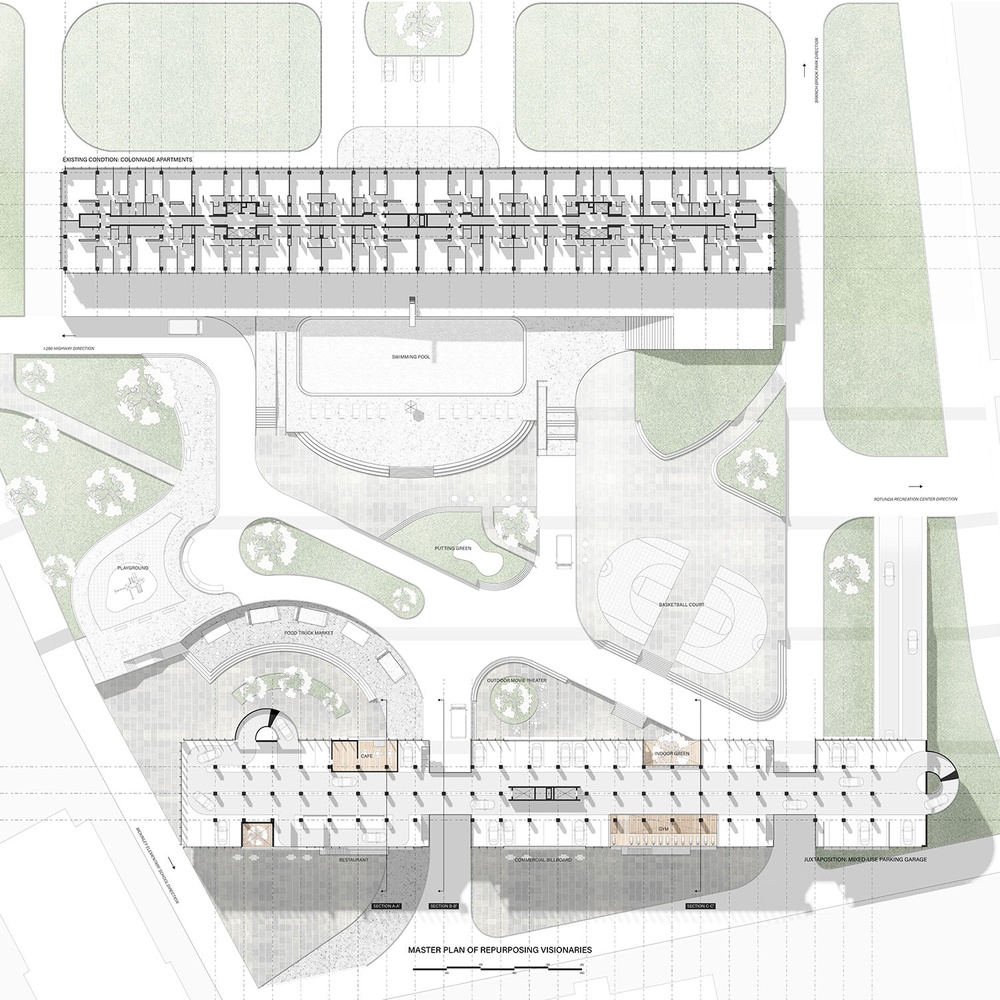This project challenges Mies van der Rohe’s modernist vision for the Colonnade Apartment, which prioritized aesthetics over livability. The rigid design resulted in a machine-like living environment, which lacked flexibility and user-determined space.
The project involves an in-depth comparison of the Tower of David and the Colonnade apartments. The Colonnade Apartments’ modernist vision, adapted from the Seagram building, resulted in social control, isolation of residents, and the formation of a gated community, unlike the Tower of David, which promoted social liberation despite being unfinished.
The counter-proposal aims to revitalize the Colonnade Apartment site by redistributing parking lots and parks, creating pathways, and incorporating commercial spaces to foster a sense of community. The existing curtain-wall structure and grid are repurposed as a parking garage with intimate signboards and irregular placements of communal, commercial places. The park enables users to interact with the repurposed visionaries to produce a dynamic quotidian experience while they participate in its formation.
Overall, this project seeks to create a more inclusive and community-oriented space that prioritizes livability and user-determined space over aesthetics. The goal is to enhance the quality of life for residents and visitors alike while challenging the rigid and exclusive design principles of modernist architecture.







